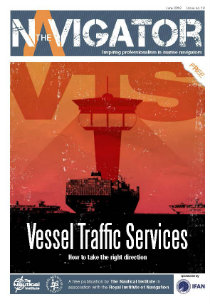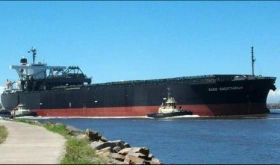There has been over three years since the new requirements of MARPOL Annex VI, that impose a specific limit on the Sulphur content being used in ships fuel, came into force in the Special Emission Control Areas (SECAs).
Ships fuel with reduced Sulphur content (0.1 %) cost higher than the usual fuel used from ships (3.5 % Sulphur content) due to the fact that they need more processing from oil refineries in order to be produced. This may give a potential competitive advantage, in terms of ship operational cost, to a ship that is not complying with MARPOL Annex VI and uses inappropriate fuel while in a SECA. However, this has a negative impact to the environment and the entire efforts made to reduce environmental air pollution.
In order to assess the level of compliance with MARPOL Annex VI and to further raise the awareness of the industry, the PSC MoU of Europe (Paris MoU) and Asia-Pacific Ocean (Tokyo MoU) will carry out from 1 September to 30 November 2018 a PSC Concentrated Inspection Campaign (CIC) on MARPOL Annex VI (Air Pollution from Ships). The aim of this CIC will be to scrutinize vessels on items related to air pollutants such as SOx, NOx, ODS, VOCs. As usual the CIC will be carried out by using a specific checklist of items to be checked by the PSCO during the course of a PSC inspection.
This checklists starts by checking on the vessels’ Bunker Delivery Notes.
Bunker delivery notes should state the correct information on the particulars of the bunkers received onboard. In terms of file management it would be prudent to store the bunker delivery notes along with bunker safety checklists, however this depends on the SMS procedures implemented by each Company. Keep in mind that in some European countries (e.g. Netherlands) it is not uncommon for the local authorities to board the vessel, take samples from the bunker tanks, carry out a bunker analysis and then compare the results against copies of the bunker delivery notes and bunker analysis carried out from the ship manager and measurements taken from aerial sensors during vessel’s port approach.
In cases where the vessel is to sail to a port where the SECA requirements apply and the vessel was not supplied with the proper fuel oil, then most prudent thing to do is to notify the vessel’s Flag Administration and be able to prove that incompliant fuel was provided to the vessel despite all efforts made to supply the vessel with compliant fuel.
The CIC checklist continuous by checking on compliance with SOx emission control areas.
Procedures for fuel oil change over should be part of the vessel’s SMS, in some cases they may even form a separate manual (e.g. Fuel Management Plan). One importance aspect of the fuel oil change over procedures is that they must be vessel specific and not just some generic guidance. Attention should also be given to avoid any discrepancies between what is stated in the procedures and instructions/posters (e.g. posted in the ECR) that may be used from the vessel’s Officers and Crew as quick reference. During a PSC inspection this might lead to possible misunderstanding on which procedure is the Official procedure to be followed by the vessel, thus leading to unnecessary deficiencies.
Various records/forms that are part of the fuel change over procedures should be also properly completed and maintained as these are also subject to PSC inspections. The Official Logbooks of the vessel (Bridge/Engine Log Book) should clearly state when/where the fuel change over procedures commenced and when/where it was completed and the volume of low Sulphur fuel oils in each fuel tank. Caution should be given for these records to demonstrate that sufficient time was given prior entry to an ECA for the fuel oil service system to be fully flushed of all fuel oils exceeding of more than 0.10% m/m. Needles also to say that all these records should be consistent to each other. This means that there must not be any discrepancies in terms of when/where the fuel was used and the amount of fuel consumed.
Compliance with MARPOL Annex VI, regulation 4.1 can be also done by using “alternative arrangements” and this is also subject of checking in this PSC CIC.
In cases where arrangements such as scrubbers are installed onboard a vessel in order to enable compliance with MARPOL Annex VI, then the vessel’s Officers and Crew should be in a position to demonstrate knowledge of the equipment’s proper operation and maintenance procedures. For the PSCO this will serve as proof that the equipment is working as designed enabling compliance with the new air quality standards.
In addition, regardless of the alternative arrangement (e.g. scrubber) used onboard, this should be properly recorded in the International Air Pollution Prevention Certificate (IAPP Certificate) in the Record of construction and equipment. This serves also as proof that the arrangement employed by the vessel is approved by the Flag Administration.
Another area which will be checked during the CIC will be the handling of ODS onboard ships.
In accordance with MARPOL Annex VI, Regulation 12, each ship which has rechargeable systems that contain ozone depleting substances should maintain a list with the said equipment and an Ozone Depleting Substances Record Book. Therefore in cases where the IAPP Certificate Supplement item 2.1 lists any equipment or systems this means that the vessel is equipped with arrangement that use ozone depleting substances and so a relevant record book should be maintained in order to be able to demonstrate that such systems are closely monitored in terms of:
- Recharging of equipment containing ODS
- Repair or maintenance of equipment containing ODS
- Deliberate or accidental discharge of ODS to the atmosphere
- Discharge of ODS to land-based reception facilities
- Supply of ODS to the ship.
Such records should be fully updated and the Officers and Crew must be in a position to prove that relevant systems are working without any defects and so there are no accidental releases of ozone depleting substances in the atmosphere, and even in cases where there is an accidental release of ODS in the atmosphere, this is recorded.
The PSCOs will also check that in cases where an Approved Method is installed for compliance with MARPOL Annex VI 13.7.1-13.7.5 relevant records (IAPP etc) are in good order.
For Marine Diesel Engines having an output greater than 5,000 kW and a displacement of more than 90 litres/cylinder, that are constructed prior to 1/Jan/2000, it should be ensured that survey records are available onboard verifying that an “approved method” has been applied to a given engine and that same is also properly depicted in vessel’s IAPP Certificate supplement. Alternatively, the engine may be certified to confirm that it works in the Tier I or Tier II or Tier III limits of marine diesel engines, this should be also noted in the IAPP Certificate.
The vessel’s incinerator will also be subject to inspection during this CIC.
The familiarity of Officers and Crew in the use of the incinerator will be checked during the PSC inspection. It would be prudent to carry out refresh training on relevant Officers and Crew responsible for the incinerator operation. In addition, operational and emergency use instructions should be posted adjacent to the incinerator to serve as a quick reference in case needed. Posting instruction (which is common practice onboard merchant vessels) may also be helpful during the PSC inspection and it also serves as evidence for the PSCO that the guidance provided in the manufacturer’s operating manual is always being followed. It is also important to have onboard records of training on the use of the incinerator.
The incinerator should be in good operational condition and without any defects. Special attention should be given on the condition of the incinerator’s door and relevant interlocking mechanisms as well as on the incinerator’s chamber insulation material. It is also good practice to test the emergency stop arrangements, Crew and Officers should be knowledgeable of such test and able to explain to the PSCO the process being followed. Incinerator temperature and pressure sensors and gauge should be in good working order and without defects.
An excessive quantity of used oily rugs in front of the incinerator door will surely lead to a deficiency, therefore, good housekeeping of the area surrounding the incinerator gives a good impression to the inspector.
Needless to say that records of incinerator use should be also maintained (e.g. when, where) and incineration of various substances should be compliant with MARPOL (e.g. incineration of PCBs is prohibited).
Finally the Masters should be also able to demonstrate familiarity with the existence of the VOC Manual and the SEEMP.
Tankers carrying crude oil and certain gas carriers are required to have onboard a VOC Management Plan which describes measures and procedures to be taken in order to minimize the VOC emissions during the loading, sea passage and discharge of cargo. As part of these procedures various records may be generated and as a result, such records are subject to inspection by a PSCO. This plan should be approved by the Flag Administration of the vessel or by the vessel’s Class on behalf of the Flag Administration. It is best to keep the relevant approval letter attached to the VOC Management Pla, so as to have it readily available for an inspector. In general it is prudent for the Master of such a vessel to be well familiar with the VOC Plan and its procedures and records.
As per MARPOL Annex VI Regulation 22, each ship of 400 gross tonnage and above is required to maintain onboard a Shipboard Energy Efficiency Management Plan (SEEMP) which should be part of the vessel’s Safety Management System (SMS). In terms of a PSC inspection, the important thing about the SEEMP is its contents to be vessel specific and to keep relevant records in good order to prove that its procedures are being implemented. Although most of the times being able to just display the SEEMP onboard should suffice for a PSC inspection.
Concluding, this CIC aims mostly in signaling the shipping industry that the MARPOL Annex VI requirements are here to stay and that the PSC MoU will endeavor to enforce these requirements. A vessel that has prepared and double-checked the items contained in the CIC checklist should not face any problems in passing a PSC inspection. Even in cases where incompliance was inevitable (e.g. supply of improper fuel) if the ship is able to demonstrate through records that steps were taken to address this incompliance then the PSC will not raise any significant issues.
ABOUT THE AUTHOR
 |
Stavros Kairis is the Founder & Developer of Officer of the Watch. He is a Mechanical Engineer working in the maritime industry. Stavros studied Mechanical Engineering in the National Technical University of Athens and he was attracted to the maritime and offshore industry from his early days at the university. His interests evolve around geopolitics, human behaviour and technology. |














HI, I just would like to complement the following: non-Marpol vessel shall not have a preferred treatment in a SECA.